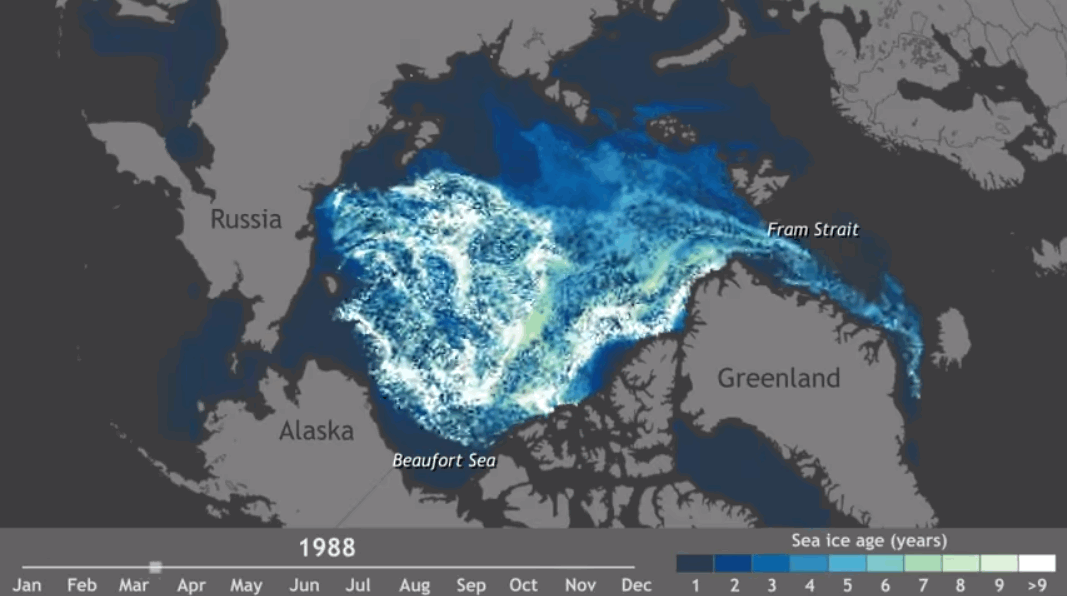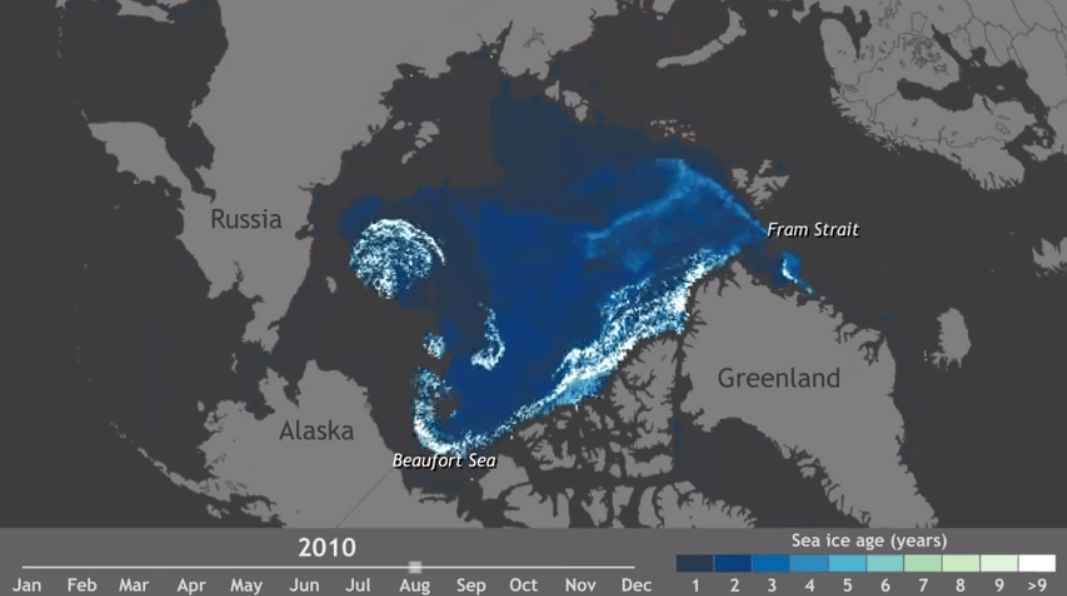A new video from the National Oceanic and Atmospheric Administration (NOAA) has reveals a concerning truth about sea ice in the Arctic: The world's perennial sea ice - ice that stays frozen year round - is melting away.
It's a well-established fact that sea ice - which is frozen ocean water, different than the glaciers and other ice forms that originate on land - has been shrinking in the Arctic for years. This chart from the National Snow and Ice Data Center (NSIDC) shows a steady decline in sea ice since 1979, using measurements taken every September, when the ice reaches its minimum for the year.
 This trend shows that more ice is melting as the Earth heats up. The question is whether this is young ice that melts and refreezes every year, or older ice that has been around for years.
This trend shows that more ice is melting as the Earth heats up. The question is whether this is young ice that melts and refreezes every year, or older ice that has been around for years.
Scientists say it's important to pay attention to how old the existing sea ice is. Older sea ice is often thicker, meaning it's more likely to survive from one year to the next. Younger ice is thinner and more likely to melt during the warmer spring season. Even if it refreezes during the winter, it exposes the ocean's surface to the sun's rays while it's gone, which warms the ocean water.
Ice is reflective and capable of beaming much of the sun's energy back out into space - but the dark-colored ocean absorbs heat instead. When this happens, the ocean's temperature can start to rise, which can cause even more ice to melt. Warmer water is also bad for delicate sea life that can't adapt to the rising water temperatures, and adds to rates of sea-level rise as it increases in volume through a process called "thermal expansion."
Unfortunately, NOAA's new video shows that sea ice in the Arctic is getting younger and younger as the older ice gives in to rising global temperatures and melts away. The video uses data collected by Mark Tschudi, of the University of Colorado-Boulder.
This clip shows the age of Arctic sea ice in the late 1980s. The lighter-colored ice is older and the darker ice is younger. You can see the periodic nature of the darker blue young ice, increasing until the spring and decreasing going into the fall. On top of that, you can see the bright white ice (older than 9 years, according to the legend on the video) decreasing in size by 1990:
 Here's the same region in the early 2000s - the older ice makes a little recovery, but, you can see there's definitely less of the older ice and more of the younger ice in the center region of the north pole.
Here's the same region in the early 2000s - the older ice makes a little recovery, but, you can see there's definitely less of the older ice and more of the younger ice in the center region of the north pole.
 And here's a clip covering the last several years. You can see there's a huge decrease in older sea ice between this clip and the one from the 1980s.
And here's a clip covering the last several years. You can see there's a huge decrease in older sea ice between this clip and the one from the 1980s.
 "We've come to an era where the older ice is getting to be less observed and the coverage of the ice pack now is a lot more first-year ice and second-year ice," Tschudi told VICE News.
"We've come to an era where the older ice is getting to be less observed and the coverage of the ice pack now is a lot more first-year ice and second-year ice," Tschudi told VICE News.
View the full NOAA video below: